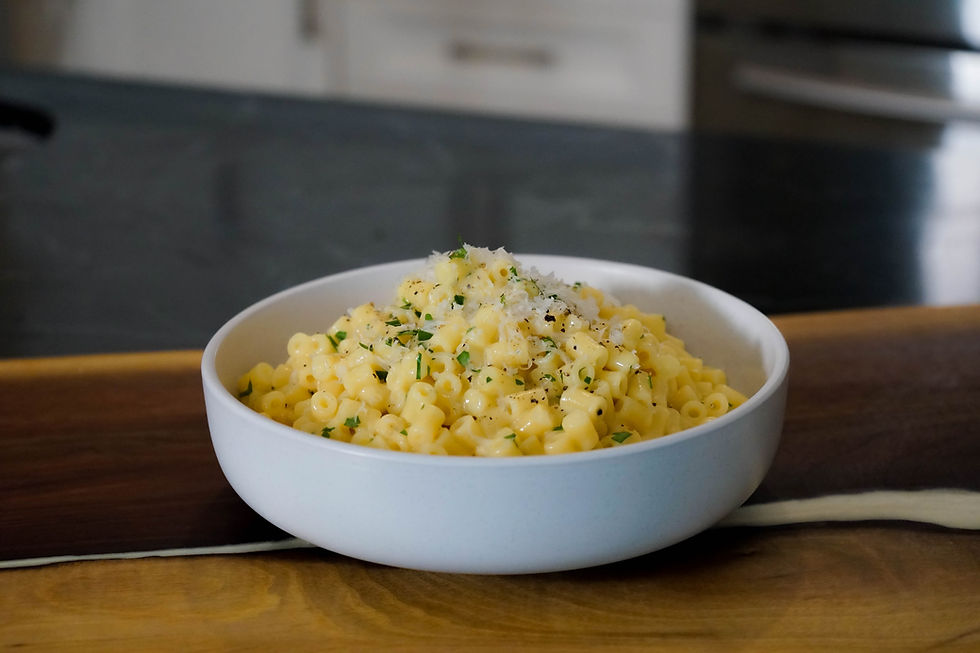Sausage and Cauliflower Pasta
- Mark Calaminici
- Dec 3, 2023
- 2 min read
Updated: Feb 12, 2024
If you need a recipe that sneaks in some veggies but you wont notice it’s in there, this is the recipe you need. Now, the main vegetable here is cauliflower and when it’s turned into riced cauliflower it softens nicely and almost melts into the sauce. The sausage adds some great flavour and of course we cant forget about the cheese, Parmigiano-Reggiano! I hope you give this recipe a go, enjoy!

SAUSAGE AND CAULIFLOWER PASTA
Recipe by Mark Calaminici | Food Loves Company
Serves 4
Ingredients
3-4 tbsp. Extra virgin olive oil
2-3 sausages, casings removed and crumbled
1/2 of a small to medium yellow onion, finely chopped
2 garlic cloves, thinly sliced or finely chopped
2 tbsp. Tomato paste
Salt, to taste
Freshly cracked pepper, to taste
680ml Passata, strained tomatoes
1 head of cauliflower, riced or finely chopped up
1 small chunk of a Parmigiano-Reggiano cheese rind
Fresh basil, to taste, torn
500g Rigatoni or any pasta you prefer
60g Parmigiano-Reggiano, finely grated
Method
1. In a pan on medium-high heat, add 1 tbsp. Extra virgin olive oil and sausage. Cook, stirring occasionally. You can break up the sausage up into pieces with a wooden spoon. I like to brown up the sausage as they start to get crispy, so let the sausage sit a bit undisturbed to get a bit crispy and colour. You will see the pan may have some fond developing and that will get released when we add the onion. Once sausage is cooked remove and set aside.
2. In the same pot, add 2-3 tbsp. Of extra virgin olive oil and the onion. Sauté until the onion has softened. Add garlic, tomato paste and season with salt and freshly cracked pepper. When adding the tomato paste, create a hot spot in the pan and toast it a little bit. Add the jar passata, fill the jar half way up with water and add that as well into the pot. Add the sausage, cheese rind and cauliflower. Add fresh basil and season with salt and freshly cracked pepper. Simmer with a lid on low heat for about an hour, stirring frequently. Remove lid and continue to simmer for about another 30-60 minutes. Remove the cheese rind if you like or leave it in, its edible for whoever gets it.
3. Cook the spaghetti in a large pot of boiling salted water just before al dente, as we will finish cooking the pasta in the sauce. Reserve pasta water.
4. Add a ladle of sauce to the pan. Add pasta to the pan with a ladle of pasta water. Continue to cook the pasta in the pan, stirring and tossing, adding more pasta water if needed. Turn off the heat or remove the pan from the head and add the Parmigiano-Reggiano, a handful at a time and mix and toss to incorporate into the pasta. You can add more pasta water if you want a bit of a looser sauce. Enjoy!
.png)







Comments